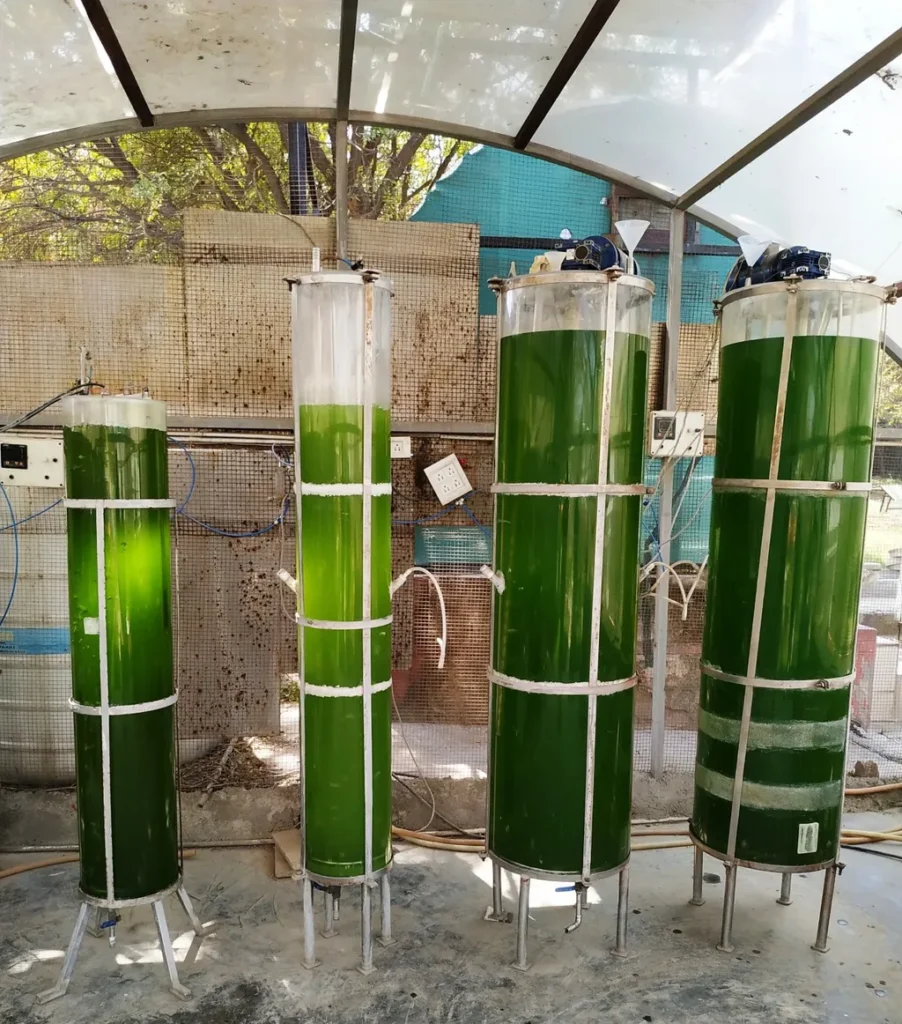In the heart of Uzbekistan, a novel approach to carbon capture is brewing, one that could reshape the energy sector’s decarbonization strategy. Azizbek Kamolov, a researcher from the Department of IT, Automation, and Control at the Tashkent Institute of Chemical Technology, has published a study in the journal *Proceedings of Engineering* that explores the potential of using microalgae to capture and utilize carbon dioxide (CO₂) emissions from a natural gas-fired power plant. This innovative method, known as carbon biofixation, could offer a cost-competitive and environmentally friendly alternative to traditional carbon capture technologies.
The study focuses on the Turakurgan natural gas-fired combined cycle (NGCC) power plant, located in the eastern part of Uzbekistan. Kamolov and his team evaluated the technical and economic feasibility of integrating microalgae cultivation into the power plant’s operations. The results are promising, suggesting that while the initial investment in photobioreactors—a key technology in this process—is substantial, the overall costs could be offset by a carbon tax of around USD 50 per ton of CO₂ emissions.
“Although the purchase and installation costs of photobioreactors require significant investments in the capital costs, the technology would still be cost competitive as long as there is a carbon tax imposition,” Kamolov explained. This finding is particularly significant given the global push towards carbon pricing mechanisms to curb greenhouse gas emissions.
The study also highlights that CO₂ biofixation could be more suitable than benchmark absorption techniques, especially in conditions where CO₂ concentration is low. This could open up new avenues for carbon capture in industries where traditional methods are less effective.
The research is part of a broader effort to assess the techno-economic and environmental impacts of various carbon capture and utilization (CCU) pathways. Kamolov’s work is a step towards understanding the potential of biofixation as a viable CCU strategy, particularly in the context of natural gas-fired power plants.
As the world grapples with the urgent need to reduce greenhouse gas emissions, innovative solutions like carbon biofixation could play a pivotal role in the energy sector’s transition towards a low-carbon future. Kamolov’s research, published in the journal *Proceedings of Engineering*, offers a glimpse into the potential of this technology and sets the stage for further exploration and development.
The study’s findings could influence future developments in the field, encouraging further research into CO₂-based microalgae cultivation and its comparison with other carbon capture technologies. As Kamolov and his team continue their work, the energy sector watches closely, hopeful that this innovative approach could be a game-changer in the fight against climate change.

